Before becoming an Assistant Professor at the Stanford Graduate School of Education, Dr. Michael Hines was a Minority Postdoctoral Fellow in History and Education at Teachers College Columbia University. Currently his research focuses on how African Americans in the early twentieth century created new curricular discourses around race and historical representation.
Key points
- Vary engagement through media, polls, Zoom interactions, and discussion-based activities
- Build community by laying the groundwork right away, then enabling a space for many voices
- Understand where students are at through small, low-stakes opportunities for feedback
- Leverage TA’s as co-pilots during Zoom sessions
What were some important lessons learned transferring knowledge from middle school Social Studies teacher to History of US Education professorship?
I think that teaching middle school demands that you develop multiple ways of engaging students early on. That’s probably the skill or mindset that has transferred best to a distance learning setting where you have to be even more thoughtful about how to keep student interest. For instance, I do mini-lectures and I have PowerPoints that go along with those, but for this setting, I think it’s important that we’re not crowding a presentation with a lot of text. I tried to trim the amount of text down to just what’s essential and then incorporated images or audio clips from songs or film clips to give a different look or a different way to engage.
I’ve always used small group discussions and whole group discussions, but that looks different in a distance learning environment where you’re having to use Zoom. I’ve always used “think, pair, share” as a way to get students talking to one another and then sharing out, but, again, that looks different in a distance environment through Zoom. Some of the specific tools are new even though the strategies are the same: encouraging students to use the “clap” and “thumbs up” icons when other classmates are sharing to show support and agreement or using Zoom “quick polls” to do a heat check to see what your students are thinking about a certain subject. That’s really easy. The annotate function on Zoom is really nice to open up a discussion and have students share so that everyone can see them and then we can read them all together. And also the chat function.
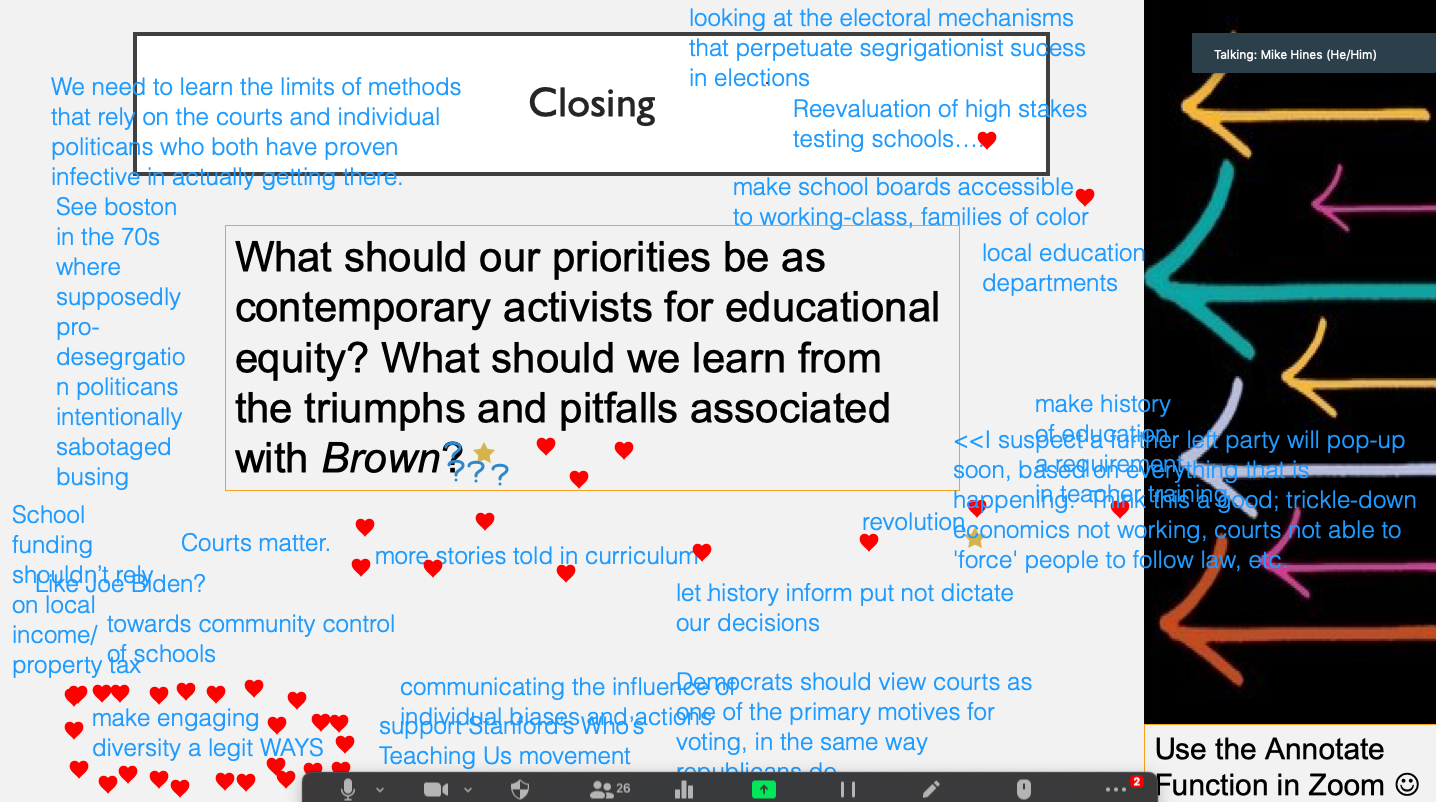
How did you prioritize and practice student-centered learning?
We found that giving people multiple options is really good. If we open up a question and we say: “you can respond using the chat, you can respond anonymously through a chat directly to myself or to a TA, and then we will read it out loud without your name attached or information attached, you can use the raise hand function in Zoom or you can just wave your hand in front of your screen and we’ll see you and we can call on you.” I think that that gives people enough different modes to get a response out there and some people are more comfortable sharing than others.
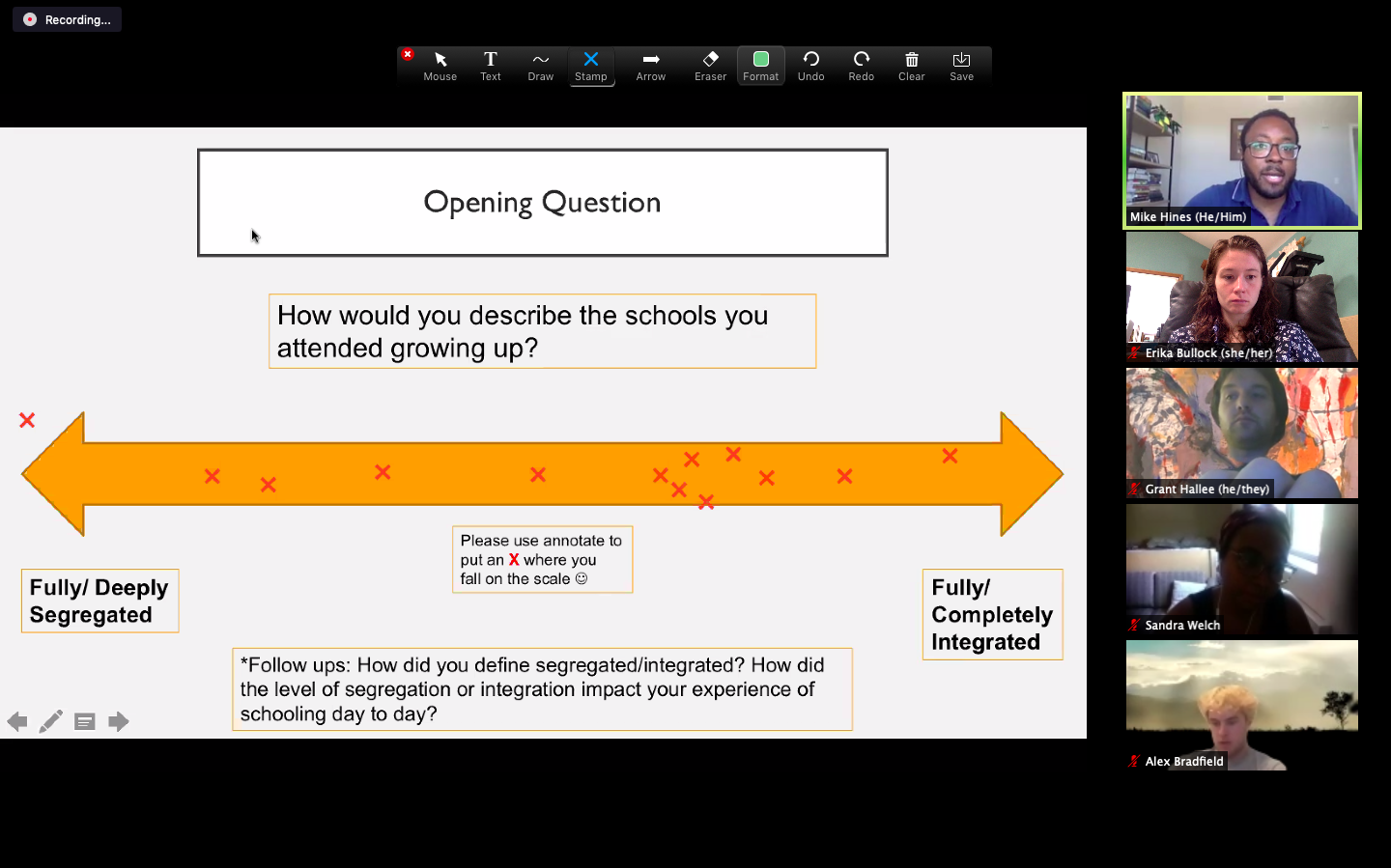
We’re getting students to check-in during office hours by making it as easy as possible for students to schedule a time with us. I know there’s a ton of different apps for that, but we use Calendly and it seems to work really well. I’ve met with five or six students already this quarter, and so has my TA Erika Bullock. That seems to be a really good way for students to schedule time with us. Then, they can also give us details about what they want to talk about specifically so that we can both come to those meetings well prepared and make the most out of that time.
How do you approach teaching alongside a TA in a remote learning environment?
I think that having a great TA is really important in the distance learning environment. Being in sync with your TA and having them really be the co-pilot of the lesson is also important. Erika is amazing. She does a great job of running other dimensions of the class while I’m giving the direct instruction. She troubleshoots technology issues, collects questions, manages breakout groups, facilitates discussions, and answers students’ concerns through chat. Also, she’s ready to step in at a moment’s notice if I lose the connection or have a problem on my end. As the quarter has progressed she’s really taken ownership of the course and become more comfortable co-teaching and bringing her own expertise and knowledge into the planning and execution of each class. The entire class has really benefited, and I’ve learned a lot from her as well.
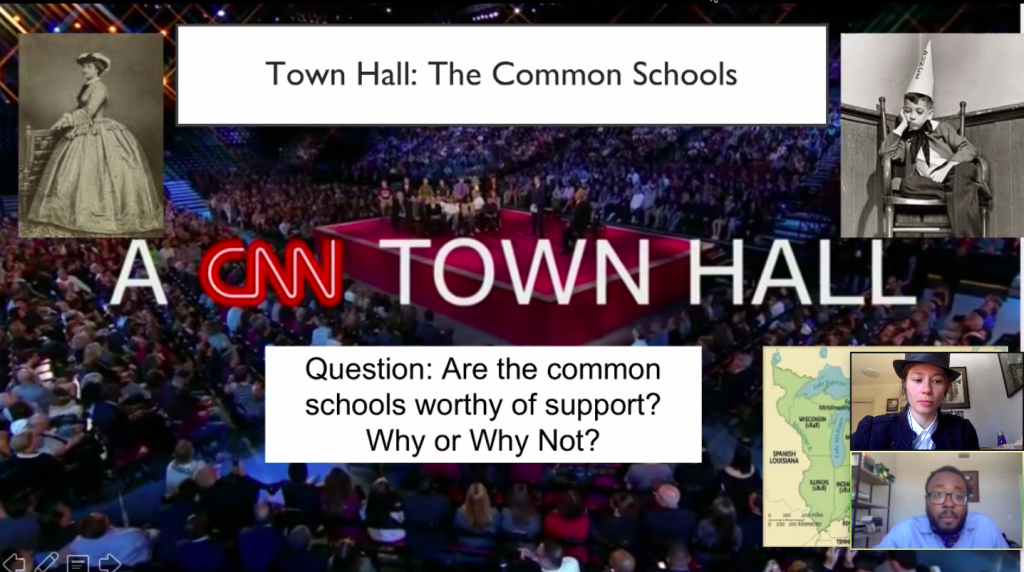
What role does feedback play?
I think that feedback should play an integral part in your course planning and teaching no matter what the environment is, but it’s especially important right now. We tend to do small check-ins on a weekly basis, sometimes even on a class-by-class basis. A lot of the time it’s something small and informal like an exit ticket or poll. We’ve also been getting bi-weekly reports with student feedback as well, and we’ve analyzed and talked about those. As a result, we’ve adjusted our planning, especially the amount of reading that we’re doing, and made some tweaks based on what we see in small groups. I think you’re just constantly tweaking to see how you can make things better.
Feedback doesn’t have to be super elaborate. Taking it back to being a middle school teacher, sometimes it’s as easy as a “thumbs up, thumbs down” or a “fist to five.” So something as quick as a heat check can give you a lot of useful information about what concepts are getting across and where knowledge is breaking down or where people have questions.
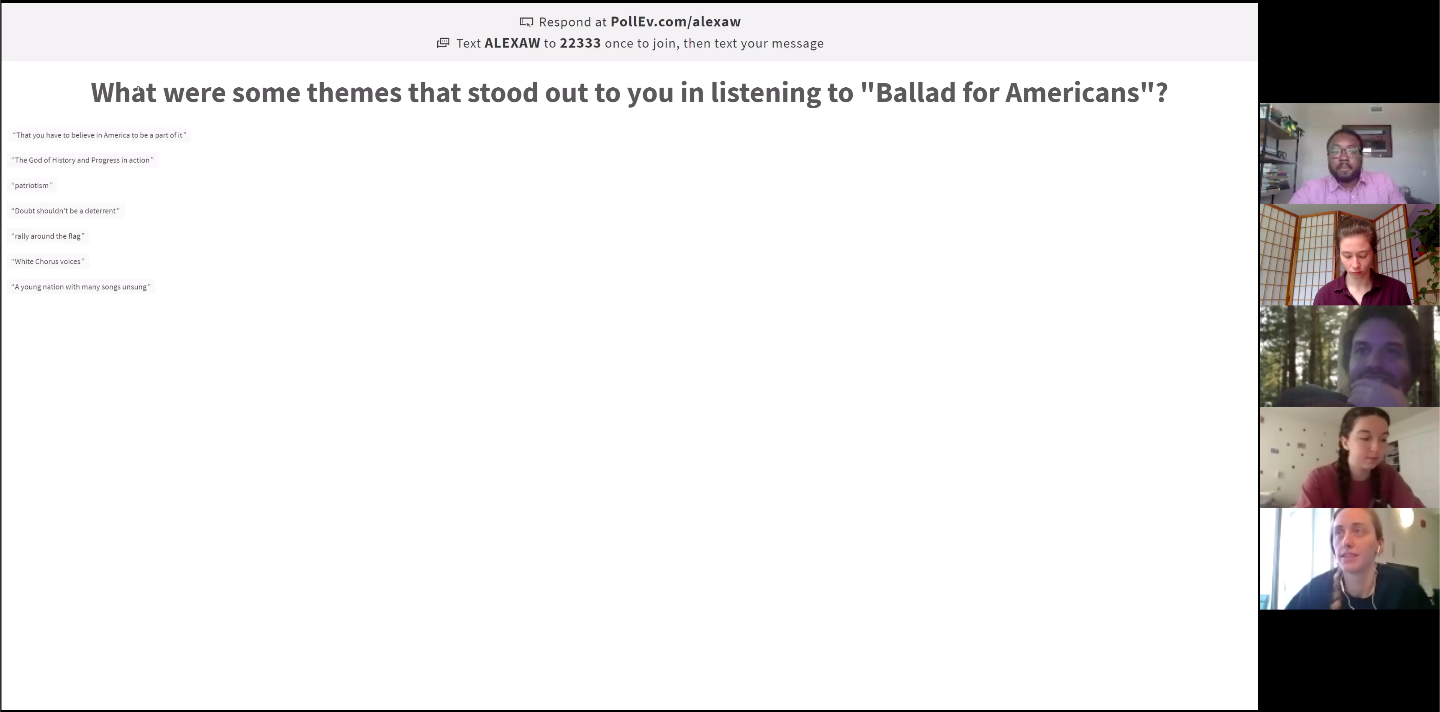
What did you witness or discover about community building in an online learning environment?
Honestly, it’s about building a certain level of trust between ourselves as the instructors and the students, and the students with each other. It is about knowing when to prioritize community over content. I think that you start laying the groundwork the minute your course starts, the first day that you meet with your students. There are so many small interactions that are missing in a virtual learning environment. There are those little side conversations and conversations before class or after class or passing by your office or on campus. One way that we’ve tried to make our classroom a space where students feel comfortable wrestling with ideas is to try to promote that community and create space for community virtually. Checking in with students, offering space at the beginning or end of a class to see how your students are doing personally can help build that trust.
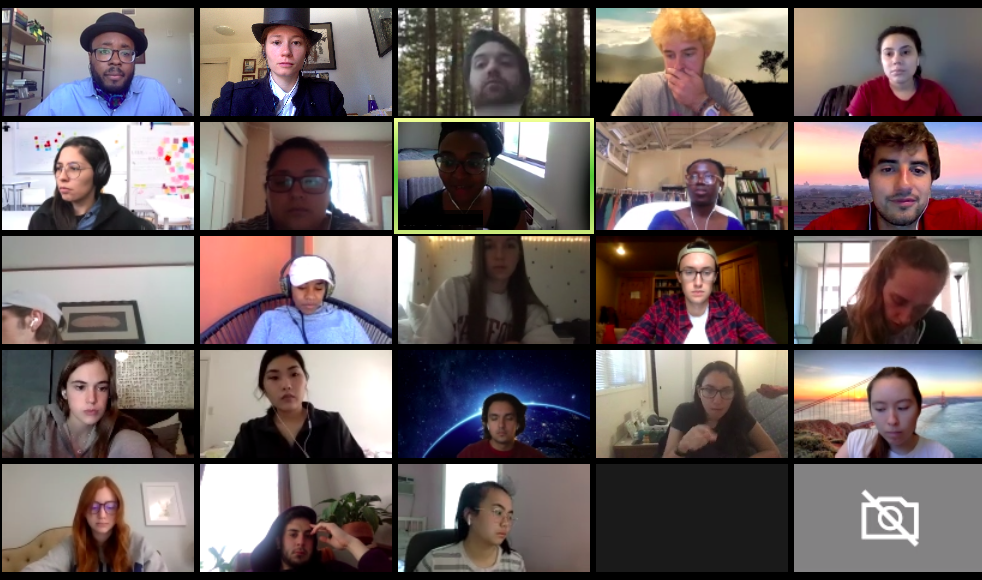
I think one thing that surprised me is that once you build that community, the students really begin to buy in, even in different time zones, even in different cities. There is a much stronger sense of cohesiveness than I thought there would be at the beginning. I see students changing their backgrounds on their Zoom settings to reflect themes that we’re talking about, encouraging each other in the chat or through thumbs up and hand claps. All of that makes me really excited because it means my students are building some sort of bond with each other, even though we’re not physically in the same place.
